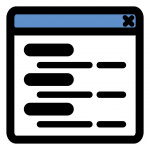Here’s What Happened When This Googler Made It Harder For Himself To Use Email
Email is about as much fun as going to the dentist, except in most jobs you have to do it every day. So it’s no surprise that it’s a huge source of stress: Messages pile up and we feel compelled to respond rapidly, but all that does is create more mail. Our inboxes are always open and we get notifications on every device. We’re half-present and multitasking all the time, grazing through the hundreds or even thousands of messages in our inboxes.
Worse, email follows us wherever we go, leading to long days, less time to recharge, and surprisingly little to show for it all. When was the last time anybody got promoted for responding to email?
This scenario is what I call the “default setting” of business email. Fortunately, like most default settings, you can change it. But where you normally change a default to make things easier, I’ve found it’s actually better to do the reverse when it comes to email—and instead make it harder.
Why would you want to do that? For the simple reason that when something’s more difficult to do, you’ll do it less. Email is a useful communication tool, but it can easily get in the way of more meaningful work. Here’s how I’ve learned to make emailing a little bit harder and became more productive as a result.
1. Limit Your Time
Email will expand to fill however much time you give it, so taming email starts by setting limits. But keep in mind that it’s only an experiment: You need to track how much time you already spend on email before you can overhaul your approach. When I first took my own inventory, I counted everything, including every time I checked a notification on my smartphone or mindlessly scrolled through my archives.
Once you have a rough estimate of how much time you spend on email each day, cut it in half. That’s your new target.
Yes, answering email will suddenly get a lot harder, but that’s the point. Time yourself whenever your inbox is open, and try to keep your daily email time under the limit. When the timer hits zero, shut it down.
When I did this, it was a real trial by fire. But if you stick with it, you’ll hone your prioritization skills to a razor’s edge. You’ll write shorter, more actionable emails and learn to ignore less valuable messages. You’ll seek out ways to get through your inbox faster, like the “one touch” rule: Open a message, take the appropriate action, and archive it.
Gradually, this got easier for me. And as I got faster, I was able to keep edging my time limit down.
2. Fight Email FOMO
Once you limit the amount of time you spend on email, your inbox will be closed by default. That’s a huge boon for your productivity all in itself, but it shouldn’t stop there. Your next step is to plan for how you’ll deal with email FOMO—the worry that an urgent email is awaiting your reply while you’re happily working on something else.
Try this: Take a look at your now-much-reduced email time, and split it up into 30-minute chunks. Then schedule each block on your calendar at suitable intervals—say, every one to four hours. That way, nothing will sit for too long, and you can also deal with email in batches, which is a more efficient use of your time.
You could even experiment with a permanent auto-response (you know, that thing you only turn on when you leave for vacation) explaining that you only check email a few times a day, and providing alternative ways to contact you.
This isn’t just an efficiency thing—it’s also about reining in the psychological impulse that makes us fret about missing an urgent message. When you always have time allotted to deal with email, you’ll worry about it less.
3. Pull The Plug
Even if you decide to spend less time on email, and schedule time to check it, it’s still going to try to pull you back in with hard-to-ignore notifications. Trust me, it’s easy to slip up even after you’ve started changing your habits, so I’ve found that the best thing to do is pull the plug completely.
You could try turning off email notifications and even delete the email app off your home screen so you need to go into your navigation bar in order to pull it up. If that’s not enough, try signing out of your account and using a complex password that’s a pain to manually enter each time.
You can even archive all email older than 24 hours so your inbox looks less demanding if you do inadvertently open it. Whatever you try, the goal is to give yourself a little help so you stay focused on the task at hand—all by making your inbox more difficult to dive into and navigate.
These are just a few ideas to get you thinking. Your relationship with email would likely change for the better if even one of these experiments worked for you. You’d probably be less stressed and distracted, and you’d have more time to do great, game-changing work.
Everybody—and every job—is different, so everyone needs their own approach. It’s just a matter of finding it. And compared to email by default, isn’t it worth a shot?
Patrick Thomas is a marketing manager at Google for Work. He’s passionate about how technology can transform work for the better. Follow him on Twitter @pthomas1620.
Fast Company , Read Full Story
(31)














